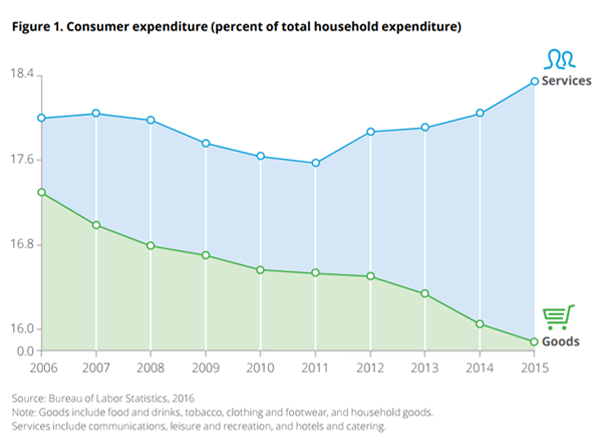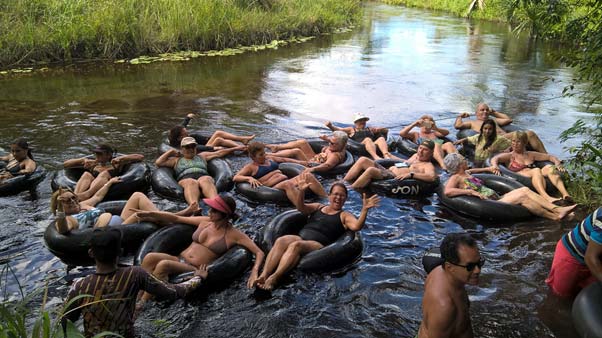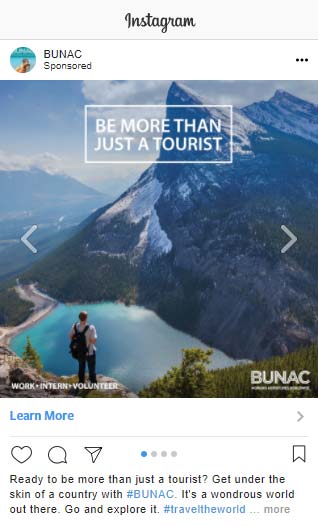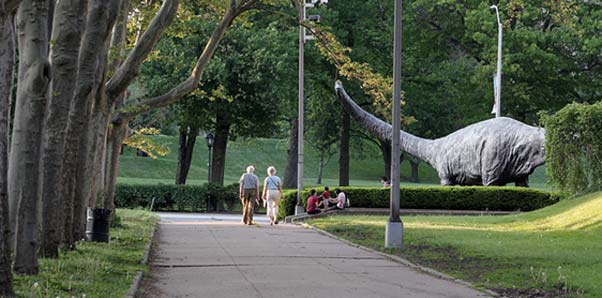Travel Industry Marketing Trends & Statistics
The good news for the Travel Industry is that we are increasingly choosing to spend our hard-earned cash on experiences rather than ‘stuff.’ And as a third of all services sold come under the general heading of ‘Travel and Tourism’; this is a seriously important industry. With a global value, according to Deloitte, of over £1.2 trillion, 100 million employees worldwide and any number of communities and, indeed, whole countries dependent on tourists for their survival we thought the very least we could do is round up the marketing channels we believe will be most important over the next twelve months.

Thomas Cook was the father of modern tourism. It all started, back in 5 July 1841, when he charged 540 customers a shilling each for an all-inclusive package of travel and food for a trip from Leicester to a temperance rally in Loughborough. Thomas Cook was a printer by trade so its unsurprising that subsequent tours were promoted via lovingly produced brochures. The holiday brochure was a tradition which survived over two centuries. The word has, however, changed. If Thomas Cook was alive today he would be an enthusiastic Instagrammer.

1. Instagram Advertising
According to a survey by Schofields Insurance, reported in The Independent, ‘Instagrammability’ is millennial’s top criteria for picking a holiday destination. The cost and availability of alcohol came in second, but let’s focus on Instagram destination marketing.

The Conrad Maldives even offers its guests an Instagram Butler to help them get the perfect shots of their perfect lives guaranteed to engender the maximum jealousy from their followers. At the very least a great PR stunt, but also indicative of just how important Instagram is for luxury travel and hotel marketing.
So Instagram, with its claimed 800 Million users is important for the travel industry. While Instagram is able
to claim 800 Million users and 80% of users follow at least one business, it’s also worth knowing that 70% of posts don’t get seen. So, as lovely as your images are, there’s little point in simply pumping them out in the hope they will be picked up by your potential customers. That’s why Instagram Advertising is so important.
2. Facebook Advertising
With two billion monthly users Facebook is another essential channel for the travel industry in 2018. By April 2016 three million companies were advertising on Facebook, by April 2017 that had grown to five million. We’ve seen 4300% ROAS from Facebook Advertising and that’s largely because it can be so effective at targeting potential customers, particularly when your average order value is £1,000 or more.
Facebook Advertising enables you to create custom audiences by, for example, uploading your existing customer email addresses. You can then advertise to them, to their friends and to ‘lookalike audiences’ which share the characteristics of your existing customers. You can then overlay that with other criteria such as location, demographics and interaction with specific pages such as related topics to the destinations you are marketing.
3. Email Marketing – always part of the mix
Email marketing is the most effective form of digital marketing. According to Super Office, 77% of consumers choose email over other online channels and 80% of marketers say it is their strongest performing media buy.
As a key part of your travel marketing mix you can use it to drive up customer loyalty and by automating campaigns you can target people recently returned from one of your holidays to encourage them to book something new.
You can also increase Customer Lifetime Value by using your email marketing data to continuously feed newly captured email addresses into your Facebook and Instagram Advertising campaigns.
4. Granular Search Engine Marketing - goodbye to the caveman

The way in which people search for your products has changed. That’s partly because we are all increasingly
sputtering our requests for goods and information into our mobile phones, and even more so into home hubs such as Alexa and Echo Dot.
Voice searches predicted to account for 50% of searches by 2020
According to Global Web Index, one in five adults uses search on their mobiles each month while ComScore estimates that by 2020 50 percent of searches will be by voice. Amazon sold more Alexa type devices over the 2017 holidays than anything else, in their words ‘millions’.
So, voice search is a solid trend, not a fad. And even when we are clicking or prodding at our keyboards and screens we are tending to use longer searches.
Back, not so long ago, we all used to search using what we call ‘caveman searches’. You might type into Google, Bing or even Ask Jeeves (it’s still with us, as Ask, in case you were wondering), one or two word searches such as ‘holidays’ or even ‘holidays online’. Only the sophisticated and optimistic would venture ‘holidays in Spain’ or ‘villa holidays with pool in Alicante’.
But now there is such a wealth of information. Services, goods and, indeed, holidays available on the web that a search with any number of modifiers will get good results. Hence ‘Holidays in Barcelona with yoga and vegetarian food’ produced some very usable results, if you like that sort of thing.
Along with specific destinations expect customers in 2018 to search for:
- Accommodation type e.g. Villa, cottage, hotel or holiday
- Accommodation facilities e.g. Pool
- Time of year e.g. Specific available dates
- Food options e.g. Slow food, foodie, vegan or fine dining
- Price e.g. Luxury or cheap
- Suitability for different group types e.g. Family or couples
As the search criteria becomes more complex it become less common but if you come up on page 1 of the results your chance of a sale will be vastly increased.
It all makes sense; the more people discover that you have exactly what they want the more likely they are to buy from you.
You need to know your niche and make sure you have optimised the right pages on your site for the multitude of keyword combinations that apply to your website and brand.

5. Digital PR, and Traditional PR. The critical difference.
Getting yourself into those ubiquitous guides in the old broadsheets, otherwise known as the posh papers in the UK - that’s The Telegraph, Guardian, FT and Times as well as the glossy mags like Vanity Fair and Vogue can still be a great way of building brand awareness and attracting potential customers.
But the reality for purveyors of ink on paper is that their readers and advertisers have also moved online. They have, of course, responded with their online offerings, some echoing their printed titles some complementing, others overshadowing. The difference when it comes to digital PR for the travel industry is that the online press offers the possibility of a convenient link back to your site that potential customers who wants to know more or are ready to buy can follow.

The critical advantage for travel marketers is that precious Digital PR link, comes from a high authority website.
Google uses inbound links from 3rd party websites, like votes of confidence, in its algorithm to determine where your site is positioned in the search engine results. The more high value votes the higher your site will be found.
So getting digital PR coverage not only means great brand exposure but will also improve your chances of appearing high up on page one of the search results.
The downside with traditional PR is that after your brand has gained a one day spike in exposure, that’s it.
With Digital PR, the coverage gained remains available online and in the magazine’s search results to drive more potential customers to your brand for many years to come.
Plus the very best Digital PR pieces are often covered in the traditional printed versions, gaining BOTH a one day spike in demand and long term brand value.
6. TripAdvisor Reviews vs Rich Snippet Reviews
With seven million listings attracting 460 million reviews and opinions (thanks Statista), TripAdvisor is too big and too influential for anyone in the travel industry to ignore.
TripAdvisor is not perfect
Late last year a totally fictitious restaurant managed to get rated as the best in London, but it is, without doubt, important as a stage on the buying journey and, with its booking facility, the place where many of those multichannel customers will be closed.
The reviews companies receive on TripAdvisor appear in TripAdvisor search results and also, if you get your website code right, Google will aggregate those reviews along with all your others and display them as Google Rich Snippets in search results. And that has the potential to be a very big deal.
There are many reasons to love Rich Snippets
They stand out in the search results, take up more real estate on the screen and they increase your click through rate.

And while Google tells us that Rich Snippets do not directly impact your search rankings, we do know from 200,000 hours of expertise that click through rate does have an impact on where Google positions your brand on page 1 of the results. Even more important, good honest reviews help to improve your conversion rate and generate more bookings.
Therefore, getting your reviews into Rich Snippets and TripAdvisor will help you get more customers and, in a lovely virtuous circle, could help you to rank higher and be found by more people. Happy days, huh?
To keep up-to-date with all the latest digital marketing trends and statistics, subscribe to our ThoughtShift Guest List or request a free digital marketing analysis.
